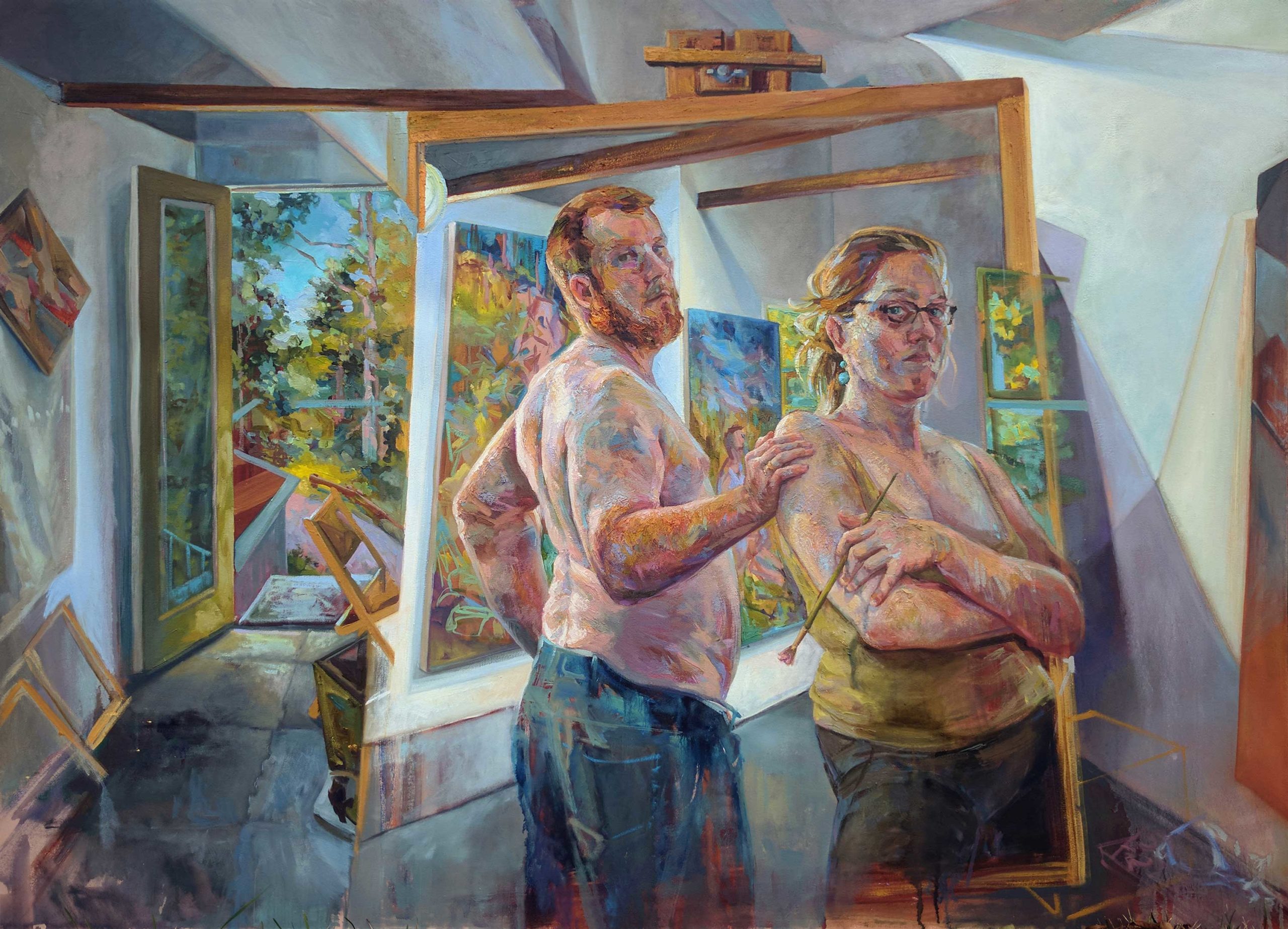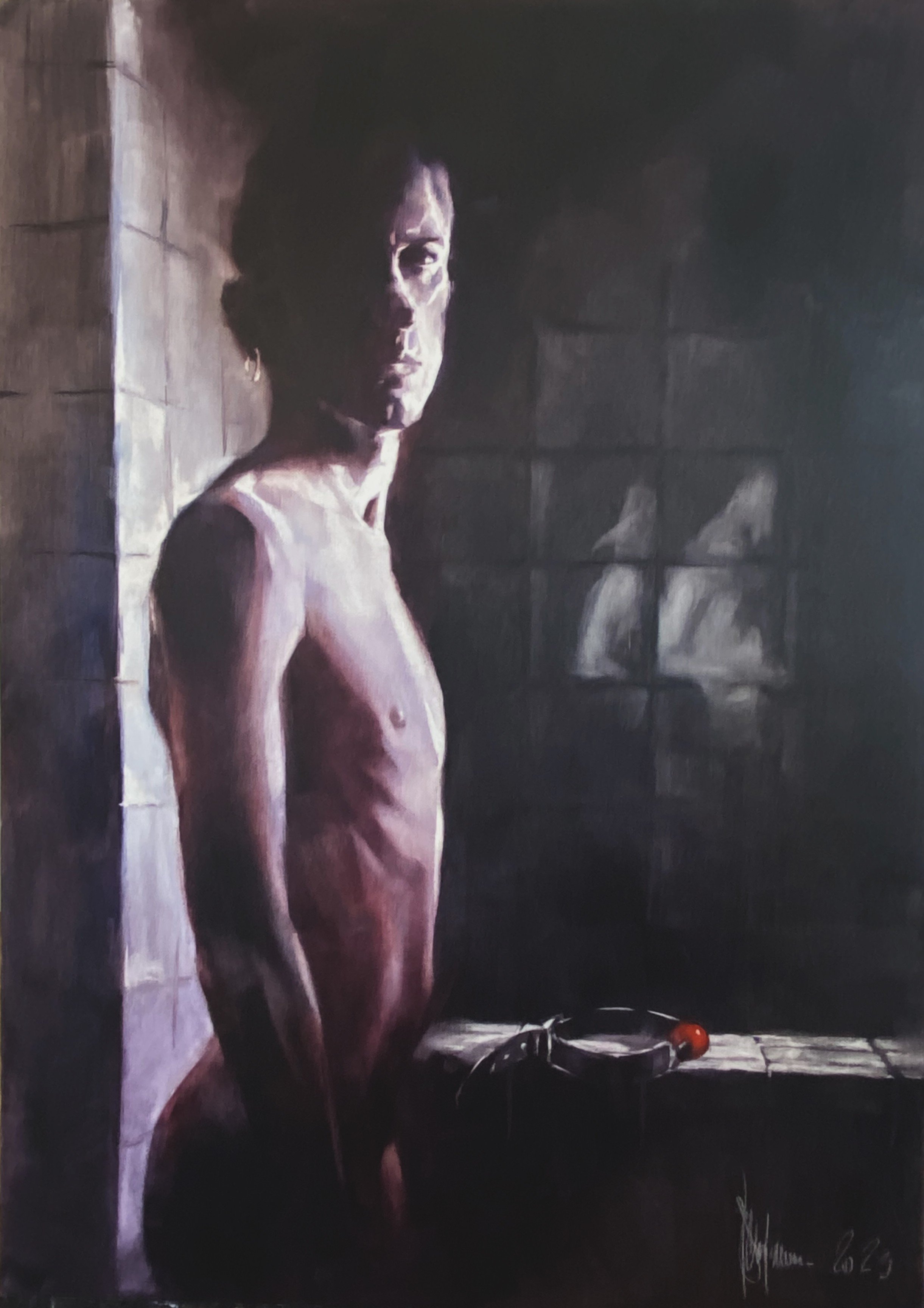A Journey Via the World of Metaphorical Oil Painting: Discovering the One-of-a-kind Attributes and Emotional Deepness of the Medium

History of Figurative Oil Painting
Emerging throughout the late Middle Ages and thriving throughout the Renaissance, figurative oil painting has a rich background that mirrors both imaginative technology and social advancement. Originally, oil paints were made use of in Europe as a way to improve the brightness and deepness of color in art work. Musicians such as Jan van Eyck spearheaded the tool, demonstrating its potential to record detailed information and structures, thus enabling an extra realistic representation of the human form.
As the Renaissance proceeded, distinguished figures like Leonardo da Vinci and Michelangelo expanded the borders of figurative oil paint. They stressed anatomical precision and point of view, creating jobs that communicated emotion and narrative deepness. The medium's convenience enabled for experimentation with light and darkness, causing the development of chiaroscuro strategies that additionally enriched the aesthetic experience.
Distinct Characteristics of the Tool
The evolution of metaphorical oil painting has actually been substantially influenced by the special characteristics of the tool itself. Oil paint, composed of pigments put on hold in oil, offers artists a remarkable adaptability that permits a large range of structures and coatings. Its slow drying out time makes it possible for precise mixing and layering, which can create deepness and luminance unattainable in other tools.
Moreover, oil paint's rich coloring provides dynamic shades that maintain their intensity with time. This characteristic is critical in figurative painting, where catching the subtleties of skin tones and emotional expressions is vital. The ability to achieve soft changes and refined gradients improves the natural quality of subjects, enabling musicians to share complex emotional states.
In addition, oil paint sticks well to numerous surfaces, such as canvas, wood, and steel, widening the extent of imaginative expression. The tool's flexibility supports different approaches, from in-depth realism to expressive brushwork, enabling musicians to explore their private styles.
Inevitably, the unique homes of oil paint not only enrich the visual experience yet additionally equip artists to communicate extensive stories, making figurative oil paint a deeply expressive art type.
Designs and techniques Employed
Within the world of figurative oil painting, musicians utilize a diverse selection of methods and styles that add to the deepness and richness of their job. One famous technique is polishing, where transparent layers of paint are applied over dried out layers, allowing light to pass through and show, improving luminosity and deepness. This method is often utilized to achieve a feeling of realism and intricacy in skin tones.
An additional method is impasto, where thick layers of paint are used with a combination knife or brush, producing a textured surface area that adds a three-dimensional quality to the paint. This style can stimulate a visceral action, drawing the viewer in with its tactile nature.
Musicians also discover various brushwork designs, from fine, detailed strokes that catch intricate attributes to broader, a lot more expressive strokes that share motion and feeling (figurative oil painting). The choice of shade palette substantially influences the general state of mind of a piece, with warm tones often giving sensations of comfort and trendy tones suggesting sorrowful
Moreover, the combination of chiaroscuro, the comparison in between light and shadow, enables musicians to develop dramatic impacts that boost the narrative quality of their work. Each method and design is thoroughly picked to boost the audience's experience and understanding.
Psychological Deepness in Metaphorical Art
Emotional depth acts as a keystone in metaphorical art, allowing artists to transcend simple representation and engage customers on an extensive degree. This psychological vibration is usually achieved via the nuanced portrayal of human figures, expressions, and interactions. Artists harness the power of light, shadow, and shade to stimulate look at this site sensations that resonate deeply with the audience, developing a natural connection to the subject.
In figurative oil paint, the complex informative post layering of paint can show the complexities of human emotion. The choice of palette, whether great or warm, plays a critical duty in establishing the mood and environment of a piece. Softer tones might evoke tranquility and self-contemplation, while strong, contrasting colors can connect tension and drama.

Influential Artists and Their Works
Countless influential artists have actually considerably formed the landscape of metaphorical oil painting, each contributing one-of-a-kind perspectives and methods that proceed to inspire contemporary designers. Amongst these artists, Lucian Freud sticks out for his extreme psychological depth and raw representation of the human kind, frequently blurring the lines in between elegance and decay. Freud's works, defined by thick, impasto brushstrokes, welcome customers to face the intricacies of identification and susceptability.

In A Similar Way, Andrew Wyeth's careful realism in pieces like "Christina's World" records extensive stories within relatively simple compositions. His usage of light and darkness evokes a sense of fond memories and emotional resonance, drawing customers right into the intimate worlds he depicts.
In the world of modern-day art, Kehinde Wiley has acquired acknowledgment for his vivid, epic portraits that test standard notions of representation. By positioning people of shade in contexts evocative classic portraiture, Wiley's job redefines the canon of art history.
These musicians, together with others, have not only enriched metaphorical oil painting yet have actually also increased the dialogue bordering emotion, society, and identity, making certain that the medium continues to be a crucial form of expression in the art globe. figurative oil painting.
Conclusion
In verdict, figurative oil paint remains an effective medium that encapsulates the intricacies of human emotion via its rich coloring and functional methods. The historic evolution of this art type, incorporated with its distinct features, permits extensive artistic expression. Methods such as glazing and impasto boost the emotional vibration of each item, while the contributions of prominent musicians remain to shape the discourse and influence bordering this timeless genre. The trip via metaphorical oil painting discloses its lasting importance in the art globe.
The exploration of figurative oil painting uses an extensive understanding right into the interaction of method, emotion, and historical context that defines this age-old medium. Oil paint, composed of her comment is here pigments put on hold in oil, provides artists an exceptional convenience that permits for a vast variety of surfaces and structures.Within the realm of figurative oil painting, artists employ a diverse array of techniques and designs that add to the deepness and richness of their work.Various influential artists have actually significantly formed the landscape of metaphorical oil paint, each contributing unique perspectives and strategies that continue to motivate contemporary developers.In final thought, figurative oil paint continues to be an effective medium that encapsulates the intricacies of human feeling with its rich coloring and functional methods.